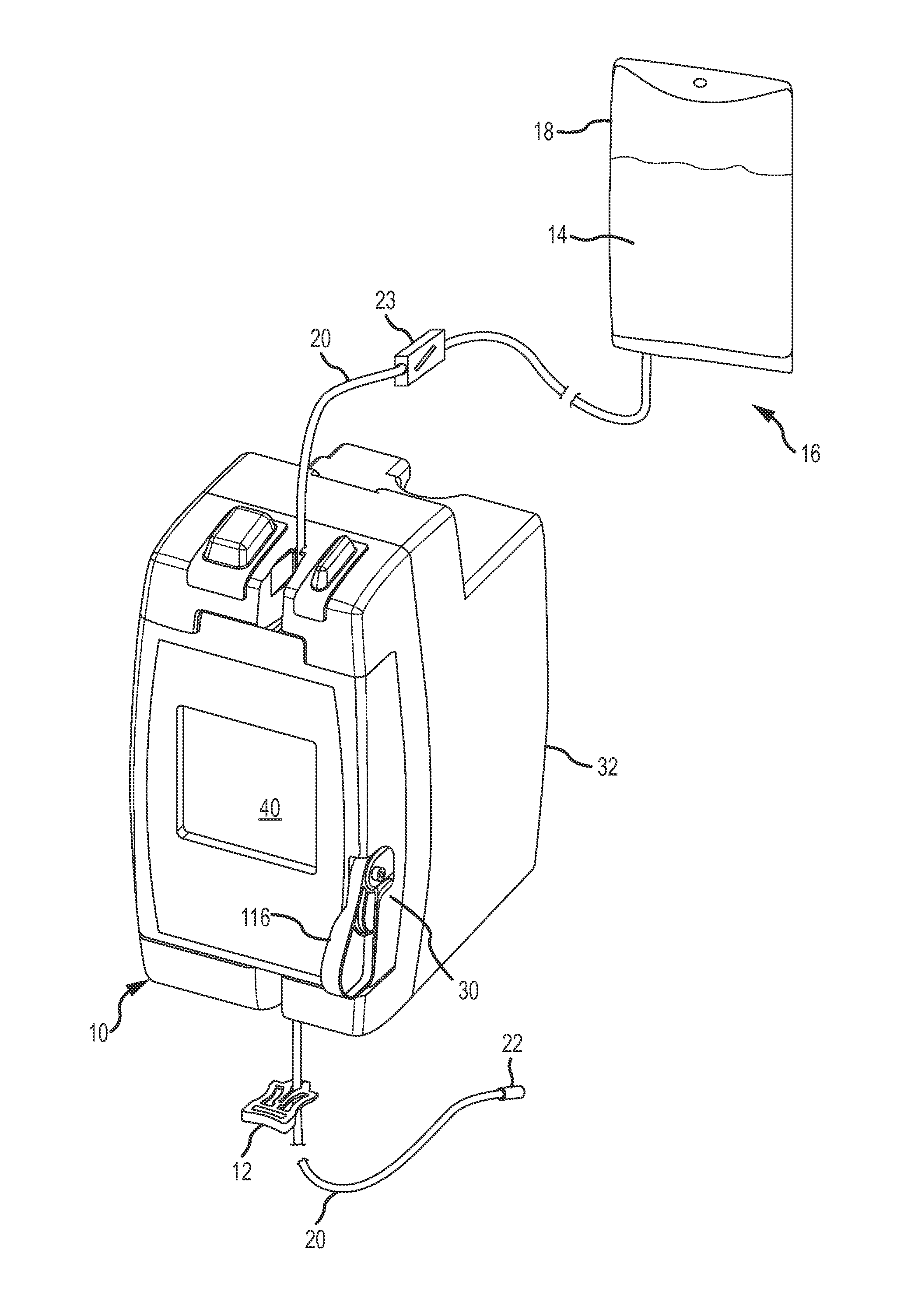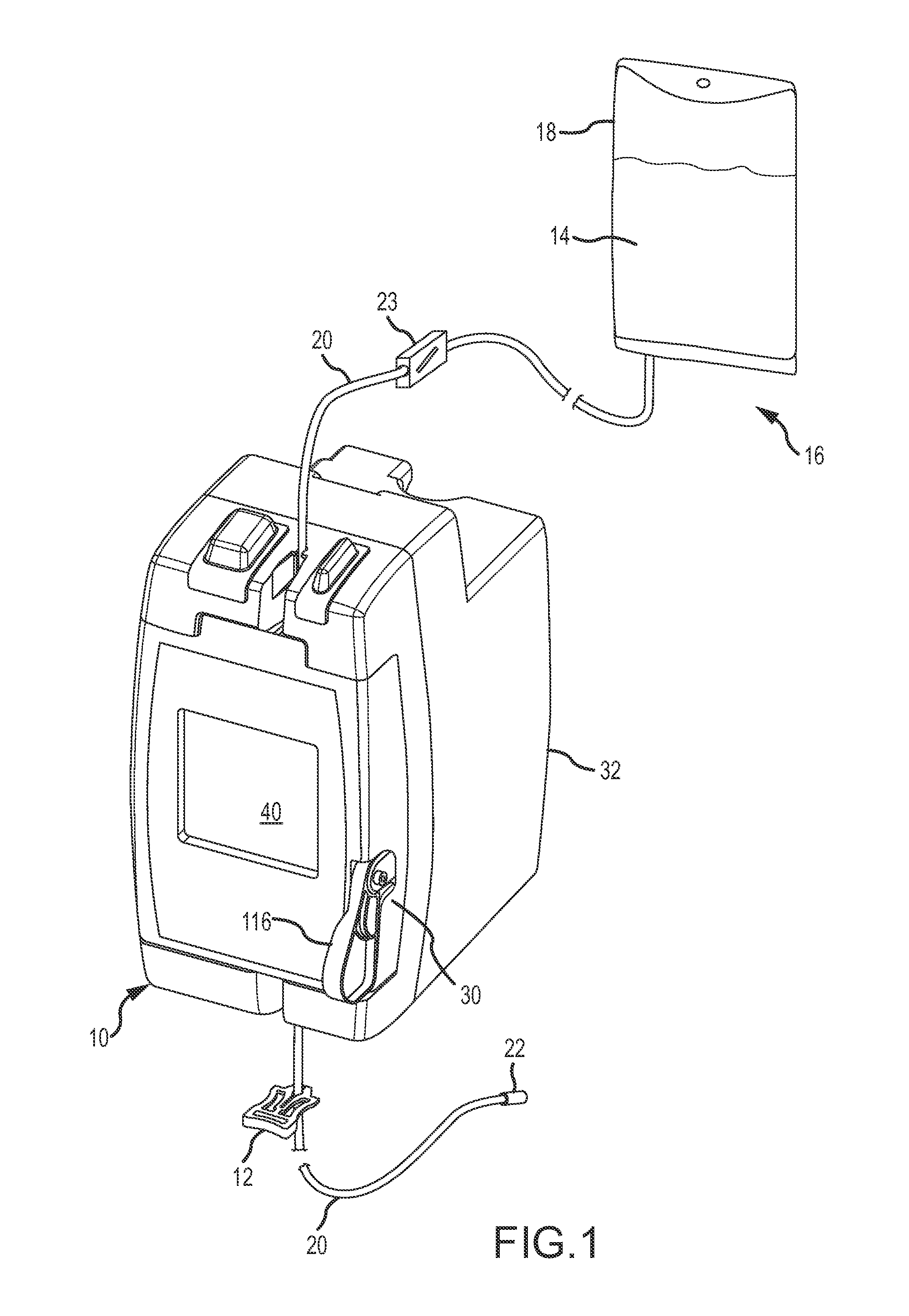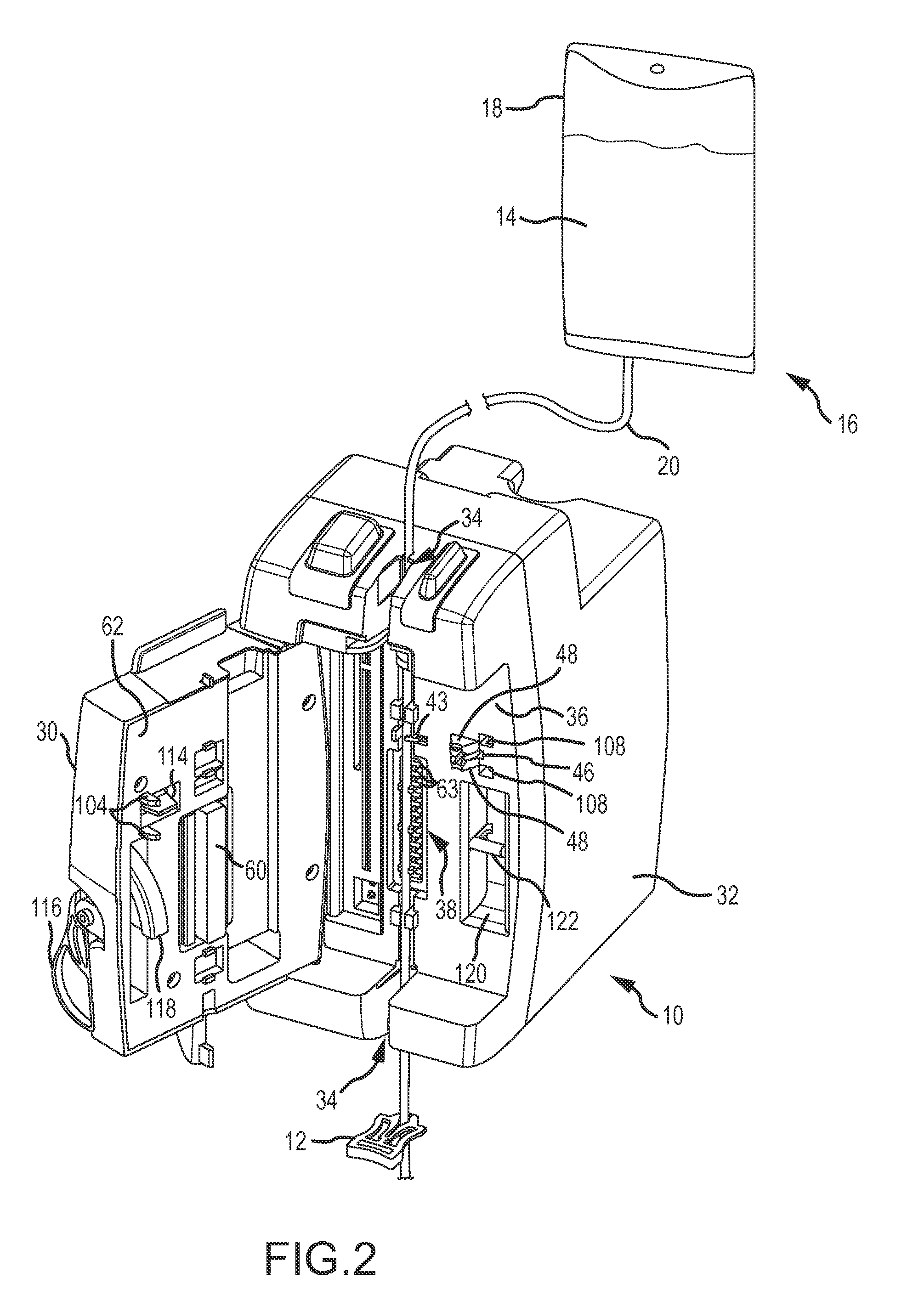Infusion Pump and Slide Clamp Apparatus and Method
a technology of infusion pump and slide clamp, which is applied in the direction of suction device, intravenous device, other medical devices, etc., can solve the problems of not having the degree of precision in fluid delivery that is typically required, not having a fully reliable metering device, and using a ramp valve that does not provide the degree of fluid delivery precision that is needed, etc., to prevent the free flow of fluid and achieve anti-free flow functionality
- Summary
- Abstract
- Description
- Claims
- Application Information
AI Technical Summary
Benefits of technology
Problems solved by technology
Method used
Image
Examples
Embodiment Construction
[0034]An infusion pump 10 and a slide clamp 12 which embody the present invention are shown in FIG. 1. The infusion pump 10 precisely meters a flow of medicinal fluid 14 through an intravenous tubing set 16 to a patient (not shown). The tubing set 16 includes a flexible and collapsible bag 18 which stores the fluid 14, and a delivery tube 20 which conducts the fluid 14 from the bag 18 to a connector 22. The connector 22 connects to a needle (not shown) inserted into a vessel, typically a vein of a patient, or to a complementary connection of a conventional vessel access device attached to the patient. A conventional ramp or roller clamp 23 is connected to the delivery tube 20 to constrict the delivery tube 20 and thereby control the cross-sectional size of an opening through the delivery tube through which the fluid 14 flows. The roller clamp 23 will typically be moved to a non-restricting position when the infusion pump 10 is in operation, because the infusion pump meters the flow ...
PUM
 Login to View More
Login to View More Abstract
Description
Claims
Application Information
 Login to View More
Login to View More - R&D
- Intellectual Property
- Life Sciences
- Materials
- Tech Scout
- Unparalleled Data Quality
- Higher Quality Content
- 60% Fewer Hallucinations
Browse by: Latest US Patents, China's latest patents, Technical Efficacy Thesaurus, Application Domain, Technology Topic, Popular Technical Reports.
© 2025 PatSnap. All rights reserved.Legal|Privacy policy|Modern Slavery Act Transparency Statement|Sitemap|About US| Contact US: help@patsnap.com



